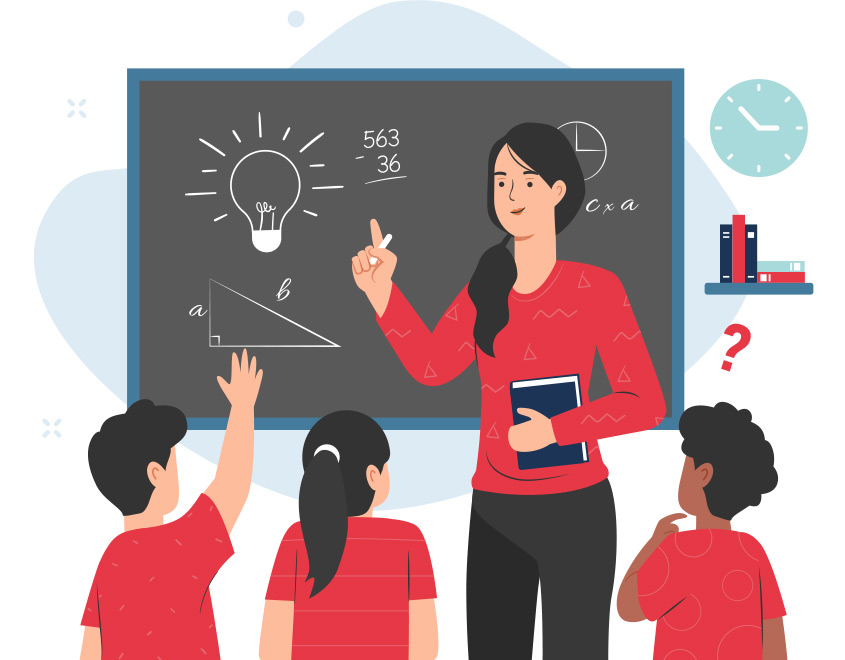Unlock Your Child’s Potential with Primary Science Tuition Singapore
Unlock Your Child’s Potential with Primary Science Tuition Singapore
Blog Article
Checking Out the Different Teaching Approaches in Key Science Education And Learning Today
The landscape of primary scientific research education and learning is progressing, with numerous mentor methods acquiring prominence in modern class. Inquiry-based discovering, hands-on experiments, and the combination of innovation are redefining exactly how educators involve young minds. Furthermore, collaborative strategies and set apart guideline are being utilized to deal with the varied needs of trainees, enhancing both involvement and understanding. As we examine these methods, questions emerge regarding their performance and the implications for future academic methods. What might these shifts in method mean for the next generation of students?
Inquiry-Based Understanding
Inquiry-Based Learning (IBL) is a pedagogical approach that encourages pupils to explore scientific principles through wondering about, investigation, and hands-on testing. This method highlights the function of pupils as energetic participants in their knowing, advertising essential thinking and analytic abilities. By involving with real-world questions, trainees end up being curious and motivated, which improves their understanding of clinical concepts.
In IBL, instructors work as facilitators, guiding students as they navigate their inquiries rather than providing info straight. This student-centered strategy permits for differentiation, accommodating different finding out designs and rates. Pupils create abilities in creating theories, creating experiments, and assessing information, which are crucial for clinical proficiency.
In addition, IBL cultivates cooperation amongst trainees, motivating them to share ideas and findings. This cumulative query promotes social skills and a sense of community within the classroom. The procedure of questions urges durability, as students find out to welcome failure as a stepping rock toward understanding.
Hands-On Experiments
Hands-on experiments are a vital element of efficient science education and learning, complementing the principles of inquiry-based learning. These experiments permit students to involve directly with clinical ideas, fostering a much deeper understanding through experiential understanding. By manipulating materials and observing outcomes, young students can grasp abstract concepts in tangible methods.
Such activities advertise important thinking and analytical abilities, as trainees assume outcomes, conduct experiments, and examine results. This procedure encourages them to ask concerns, improve their understanding, and establish a clinical way of thinking. Moreover, hands-on experiments can be tailored to diverse understanding styles, making certain that all students have the possibility to involve meaningfully with the content.
Furthermore, hands-on experiments typically urge collaboration among peers, promoting team effort and interaction abilities. Operating in teams makes it possible for students to share ideas, go over searchings for, and find out from one an additional, which enhances their overall educational experience.
Integrating hands-on experiments into the main scientific research educational program not just enriches the learning environment however additionally grows a long-lasting interest in science. By actively joining their education and learning, trainees are more probable to establish an enthusiasm for scientific inquiry that extends past the class.

Modern Technology Integration
Integrating modern technology right into primary science education has ended up being progressively essential in fostering trainee involvement and boosting finding out end results. The usage of electronic devices, such as interactive simulations, virtual labs, and academic software application, supplies pupils with opportunities to discover clinical principles in innovative ways. These resources help with a deeper understanding of intricate subjects by enabling learners to envision and Learn More adjust variables that would be impractical in a traditional class setting.
Moreover, technology assimilation motivates personalized finding out experiences. Trainees can advance at their own rate, reviewing challenging principles why not try this out via multimedia resources, which cater to different understanding designs. This versatility not just supports specific growth yet likewise grows a sense of freedom in students.
Additionally, modern technology serves as a bridge to real-world scientific research, linking pupils with present research and professional contributions. Accessibility to on the internet data sources and scientific journals broadens trainees' viewpoints on scientific questions and fosters essential thinking abilities.
Collaborative Learning
Collective knowing plays an essential function in key scientific research education by promoting teamwork and interaction skills amongst pupils. This technique urges learners to collaborate, share understanding, and involve in analytic, which boosts their understanding of clinical principles. By taking part in team tasks, trainees discover to express their concepts, pay attention to varied perspectives, and work out options, every one of which are essential skills in both academic and real-world contexts.

Study suggests that collaborative discovering can result in raised motivation and interaction in science subjects, as pupils find pleasure in common experiences (primary science tuition Singapore). Furthermore, this strategy prepares students for future collective undertakings, equipping them with the abilities required for reliable teamwork in college and professional environments. Inevitably, welcoming collaborative knowing in key science education can dramatically enrich the knowing experience and advertise a much deeper understanding of scientific inquiry
Set Apart Direction

Set apart guideline can show up in numerous means, such as differing the web content, procedures, or items of discovering. Educators might use tiered assignments that provide differing degrees of complexity, allowing students to function at their particular readiness degrees. Furthermore, flexible organizing methods can help with collaboration amongst trainees with different capacities, promoting peer learning.
Analysis plays a critical duty in this technique, as it informs guideline and assists educators comprehend each trainee's unique requirements. Formative analyses, such as tests and observations, can assist teachers in readjusting their techniques to enhance discovering outcomes. primary science tuition Singapore. Eventually, by executing differentiated direction in primary scientific research education, teachers can grow a more fair and reliable learning atmosphere, encouraging all students to reach their full possibility in understanding scientific phenomena
Verdict
In summary, the diverse mentor strategies in primary science education and learning, consisting of inquiry-based learning, hands-on experiments, innovation assimilation, joint learning, and distinguished guideline, jointly contribute to a more efficient understanding environment. These methods promote important reasoning, analytic abilities, and a deeper comprehension of scientific ideas. By carrying out these approaches, educators can produce interesting and encouraging classrooms that deal with the different needs of pupils, ultimately fostering a lifelong interest in science and boosting scholastic success.
Inquiry-Based Understanding (IBL) is an instructional technique that motivates trainees to explore scientific principles via wondering about, examination, and hands-on trial and error.Joint discovering plays an essential duty in key scientific research education by promoting teamwork and interaction abilities among students.Study shows that collective learning can lead to increased inspiration and involvement in science subjects, as students locate satisfaction in common experiences.In cultivating a comprehensive discovering atmosphere, separated guideline emerges as an essential technique to accommodate the diverse demands and capabilities of pupils in primary scientific research education and learning. Inevitably, by applying separated direction in primary scientific research education, instructors can grow an extra equitable and effective discovering setting, empowering all students to reach their complete potential in understanding clinical phenomena.
Report this page